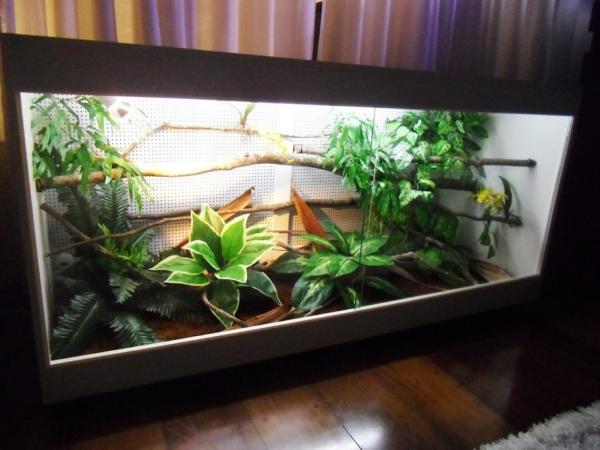Coral Snakes as Pets: Guidelines and General Tips


"Red and black, friend of Jack;
Red and yellow, kills a fellow."
Have you ever heard this rhyme? It was created to remind people how to distinguish a coral snake (Leptomicrucus, Micruroides and Micrurus) from a scarlet kingsnake (Lampropeltis elapsoides). Why is it so important to tell apart these two striped red, black and yellow snakes?
The answer is simple: while the scarlet kingsnake is nonvenomous, the coral snake is highly poisonous and dangerous. The scarlet kingsnake has cunningly evolved to look like its poisonous counterpart in order to prevent attacks from predators.
Coral snakes are very beautiful, and many people wonder whether you can have a coral snake as a pet. Stay with us at AnimalWised to learn all about coral snakes as pets with our guidelines and general tips.
What does a pet coral snake need? Basic requirements
If you're determined to acquire a coral snake as an exotic pet, you must first make sure you can meet its needs to satisfy it and keep it healthy and happy.
What do coral snakes eat?
In the wild, coral snakes feed on frogs, lizards and smaller species of snake; coral snakes are carnivorous animals. This is why you must provide a pet coral snake with small young mice - they don't need to be alive.
What kind of terrarium does a pet coral snake need?
A baby coral snake that has reached 15 centimeters (6 in) is already highly poisonous and can grow to reach 1.5 m (4'11'') long if you're lucky. To help your pet coral snake grow, you must have a terrarium of at least 100 x 60 x 90 cm (39.3 x 23.6 x 35.4 in).
Coral snakes are nocturnal and solitary animals; in the wild, they spend most of the day hidden in the leaf litter of the forest or in tree trunks. You will need to mimic this environment for a pet coral snake; give it a suitable habitat with branches and vegetation and add gravel to the bottom. You can even create a false burrow. Remember that snakes are expert escapists and any hole in the terrarium would be perfect to for an escape plot.
The temperature of the terrarium for a coral snake should be between 25 °C (77 °F) and 32 °C (89.6 °F) and the light should be natural; they require periods of 10 to 12 hours of light, but during the night they should remain in the dark.
Finally, you must add a drinking fountain for reptiles to the terrarium. You can find one in any shop.

Caring for a pet coral snake
As for caring for a coral snake, the most important aspect is that its basic needs as detailed before are completely covered at all times. Neglecting the temperature, water or light will mean death for your pet coral snake, which requires constant attention.
During shedding periods, the snake will rub up against small stones in the terrarium to remove dead skin. This shouldn't be a cause of worry, but you will need to provide the stones and check up on it regularly.
You should have the contact of a snake specialist, who will tell you how often to come visit and check that your pet coral snake is in perfect health.

Coral snake bites: How dangerous is coral snake poison?
The coral snake is a beautiful but deadly animal. The effects of its poison can begin to develop after twelve hours, in which there will be failures in the connections between the brain and muscles, failures in speech and double vision. Death could result from cardiac arrest or respiratory failure.
Even if you feel the urge to do it or think its reflexes are slow, if you're not an expert in the care and handling of snakes you must not touch a coral snake under any circumstances. If you want a pet that you can caress and handle, a coral snake is not the choice for you.
What if my coral snake bites me?
Although a coral snake bite can be lethal, it is best not to worry too much. Since 1967 there has been an antidote that can neutralize its venom.
However, we advise that you tell your friends and family before you buy a coral snake so that you can alert them as soon as possible if you've been bitten. Do not wait a second; if you're bitten by a coral snake, go to the hospital. Depending on the metabolism of each person the poison acts faster or slower, so don't wait around.

These have been our guidelines and general tips about coral snakes as pets; they are a big responsibility and risk, so you must be completely sure you can take care of them properly without endangering anyone before adopting one.
If the venom worries you, you might be better off adopting a colubrid instead of a poisonous snake. Here you can read more about the 10 most venomous animals in the world.
If you want to read similar articles to Coral Snakes as Pets: Guidelines and General Tips, we recommend you visit our What you need to know category.








